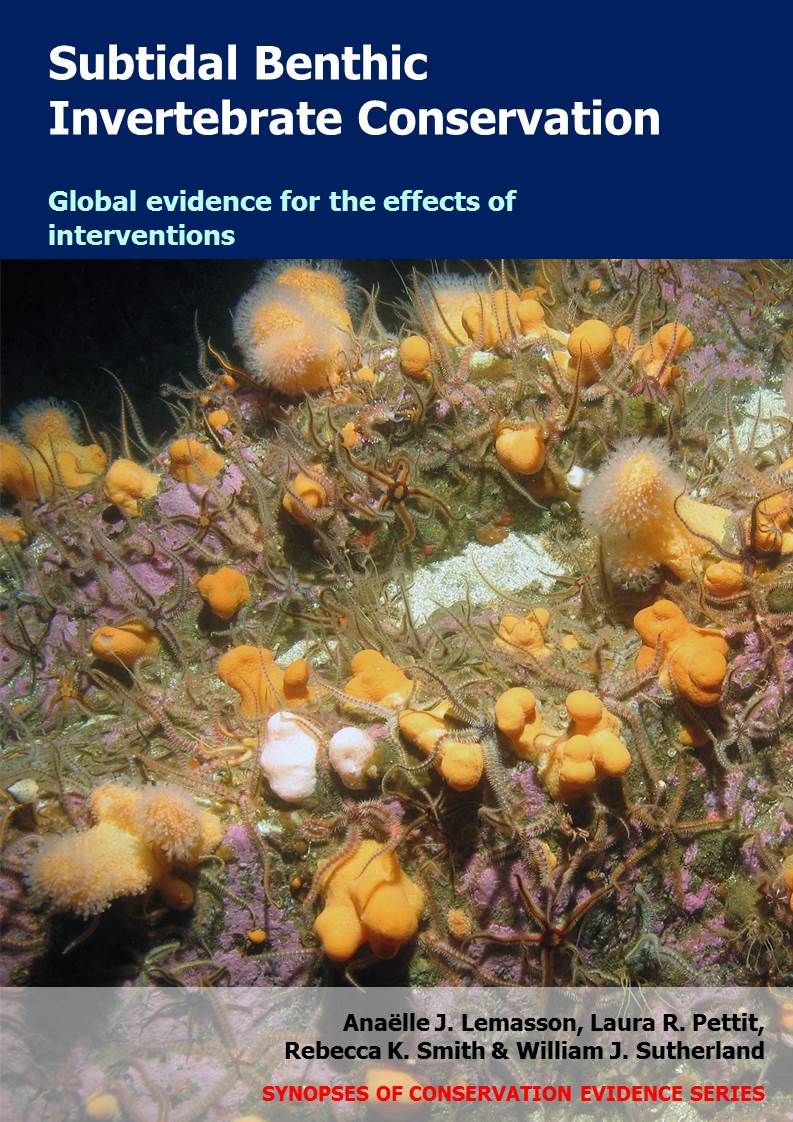Cease or prohibit the harvesting of scallops
-
Overall effectiveness category Unknown effectiveness (limited evidence)
-
Number of studies: 3
View assessment score
Hide assessment score
How is the evidence assessed?
-
Effectiveness
45% -
Certainty
33% -
Harms
0%
Study locations
Supporting evidence from individual studies
A site comparison study in 1998–2002 in two soft seabed areas in the South Atlantic Ocean, Argentina (Schejter et al. 2008) found that an area prohibiting the commercial dredging of Patagonian scallops Zygochlamys patagonica had a higher biomass of scallops compared to adjacent fished areas. Six years after closure, the biomass of scallops was higher in the closed area (4–12 kg/100 m2), compared to the fished area (1–10 kg/100 m2). The area was closed to commercial dredging of scallops in 1996. Samples were collected at 100 m depth once a year in 1998–2002 using a dredge (generalist dredge not specifically targeting scallops; 10 mm mesh) at 23 sites in the closed area and at 71 adjacent sites outside. Scallops were weighed and counted. Information was updated using an erratum (Schejter et al., 2009).
Schejter L., Bremec C.S. & Hernández D. (2009) Erratum to “Comparison between disturbed and undisturbed areas of the Patagonian scallop (Zygochlamys patagonica) fishing ground “Reclutas” in the Argentine Sea” [J. Sea Research 60/3 (2008) 193]. Journal of Sea Research 61, 275.
Study and other actions testedA replicated, site comparison study in 2007 in six rocky seabed areas in Lyme Bay, English Channel, UK (Hinz et al. 2011) found that areas closed to commercial scallop dredging did not have higher abundances of king scallop Pecten maximus or queen scallop Aequipecten opercularis, compared to areas which remained dredged. There was no significant difference in abundance between closed and dredged areas for king scallops (closed: 25–38; dredged: 27–28 individuals/100 m2) or queen scallops (closed: 41–41; dredged: 80–97 individuals/100 m2). In March and August 2007, six areas within the bay were sampled: three voluntarily closed to scallop dredging since September 2006 (but where static gear fisheries occurred) and three that remained open to scallop dredging. Samples were taken using a video camera (10 recordings/area) towed for approximately 10 minutes in a straight line. Abundances of each scallop species were recorded from the videos.
Study and other actions testedA before-and-after, site comparison study 2009–2011 in two areas of sandy, pebbly and gravelly seabed in Cardigan Bay, Irish Sea, Wales, UK (Sciberras et al. 2014) found that two years after prohibiting commercial scallop dredging year-round in an area, abundances of king scallop Pecten maximus and queen scallop Aequipecten opercularis had not increased and remained similar to that of an adjacent seasonally dredged area. Abundances of king and queen scallops were similar between closed and fished areas both before (king: closed 0.9 vs fished 0.8; queen: 0.2 vs 0.7 individuals/m2) and two years after closure (king: 0.3 vs 0.3; queen: 0.2 vs 0.7 individuals/m2). Two areas of Cardigan Bay were assessed: one permanently closed to scallop dredging in March 2010, and the other seasonally closed to scallop dredging (May to October). Surveys were conducted before closure (December 2009) and three times after (June 2010 to April 2011). During each survey, a camera was towed for 300 m at six sites/area (at 30 m depth). More than 40 images/camera tow (covering a 0.13 m2 area of seabed) were analysed, and scallops were identified and counted.
Study and other actions tested
Where has this evidence come from?
List of journals searched by synopsis
All the journals searched for all synopses
This Action forms part of the Action Synopsis:
Subtidal Benthic Invertebrate Conservation





)_2023.JPG)














